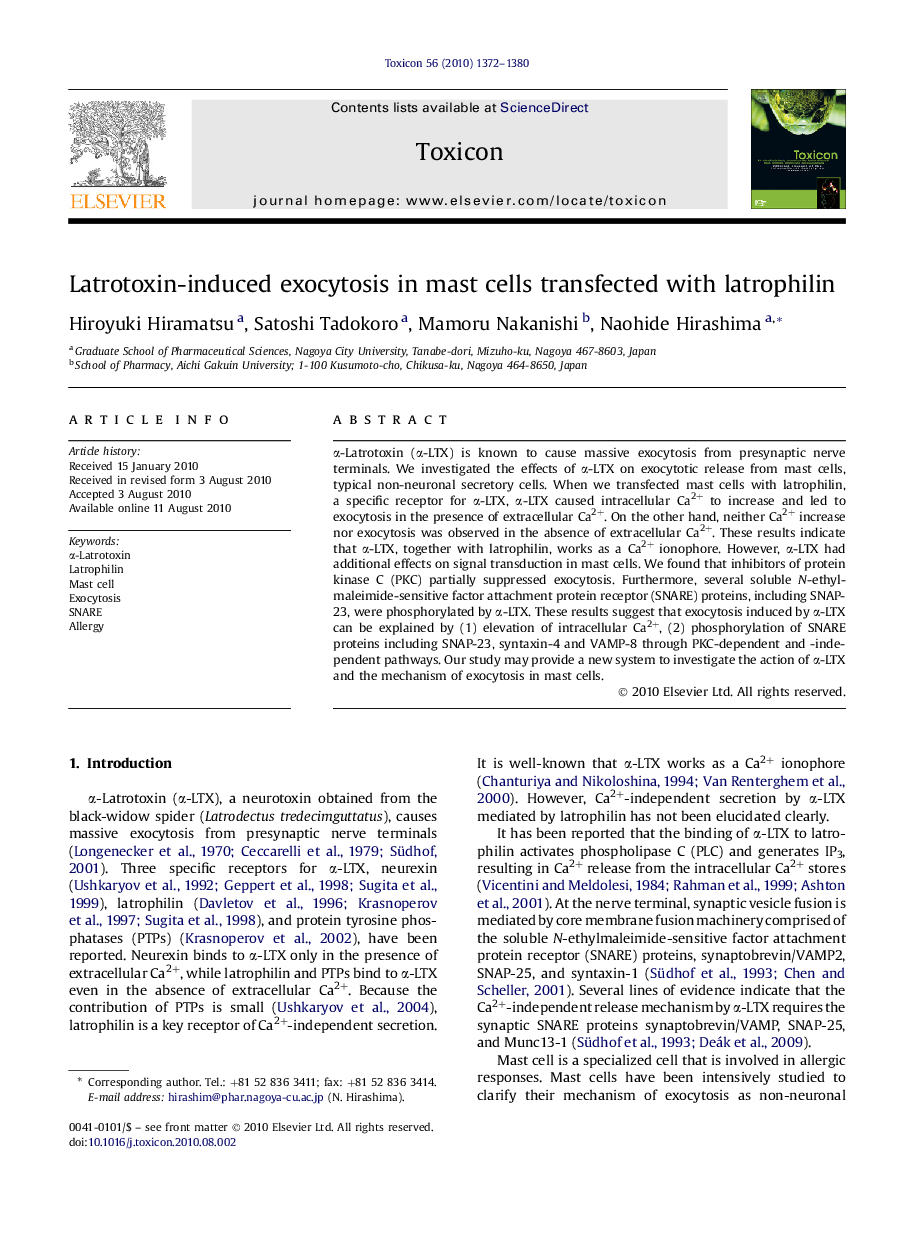| Article ID | Journal | Published Year | Pages | File Type |
|---|---|---|---|---|
| 2065052 | Toxicon | 2010 | 9 Pages |
α-Latrotoxin (α-LTX) is known to cause massive exocytosis from presynaptic nerve terminals. We investigated the effects of α-LTX on exocytotic release from mast cells, typical non-neuronal secretory cells. When we transfected mast cells with latrophilin, a specific receptor for α-LTX, α-LTX caused intracellular Ca2+ to increase and led to exocytosis in the presence of extracellular Ca2+. On the other hand, neither Ca2+ increase nor exocytosis was observed in the absence of extracellular Ca2+. These results indicate that α-LTX, together with latrophilin, works as a Ca2+ ionophore. However, α-LTX had additional effects on signal transduction in mast cells. We found that inhibitors of protein kinase C (PKC) partially suppressed exocytosis. Furthermore, several soluble N-ethylmaleimide-sensitive factor attachment protein receptor (SNARE) proteins, including SNAP-23, were phosphorylated by α-LTX. These results suggest that exocytosis induced by α-LTX can be explained by (1) elevation of intracellular Ca2+, (2) phosphorylation of SNARE proteins including SNAP-23, syntaxin-4 and VAMP-8 through PKC-dependent and -independent pathways. Our study may provide a new system to investigate the action of α-LTX and the mechanism of exocytosis in mast cells.
